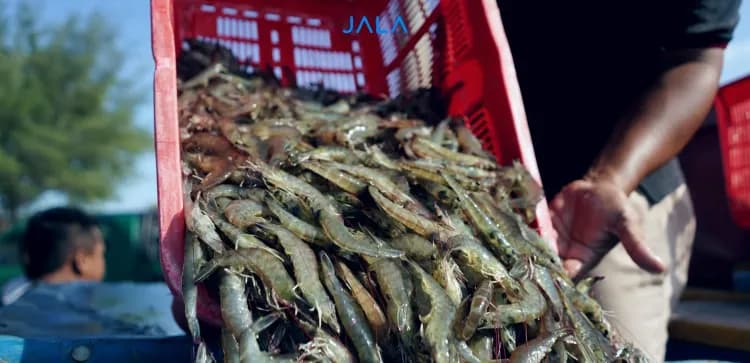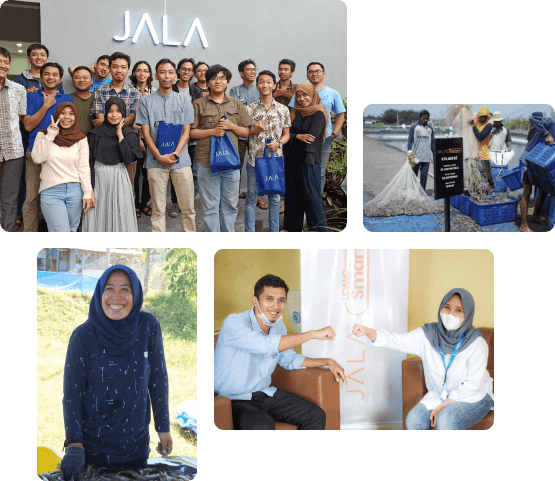
Wastewater management is a crucial aspect of shrimp farming. Without proper handling, discharge from farm production can potentially pollute and degrade environmental quality. Therefore, wastewater treatment activities in shrimp farming must follow specific technological standards and refer to wastewater quality standards to reduce pollution loads and prevent environmental contamination.
In this article, JALA summarizes the Regulation of the Minister of Environment/Head of the Environmental Management Agency Number 1 of 2025 on Wastewater Management in Shrimp Farming. The regulation aims to ensure environmental protection and proper management for shrimp farmers.
What are the obligations for shrimp farmers? What are the wastewater quality standards and the required technology? Read on to find out!
Obligations of Shrimp Farmers in Wastewater Management
1. Wastewater treatment and monitoring obligations
Shrimp farmers are required to treat their wastewater before discharge, in accordance with wastewater quality standards and wastewater treatment technology standards. In this process, they must monitor both wastewater quality and the quality of surface water bodies and/or seawater, as per the Indonesian National Standard (SNI), using a certified laboratory registered with the ministry.
Wastewater monitoring must be conducted once per production cycle. Surface water and/or seawater quality monitoring must be conducted at least once every six months using the specified wastewater quality parameters.
2. Reporting obligations for shrimp farm wastewater monitoring
Shrimp farmers must submit monitoring reports at least once every six months, including the following:
- Daily discharge volume of shrimp pond wastewater.
- Results of wastewater quality monitoring.
- Results of surface water or seawater quality monitoring.
- Wastewater load calculations.
Feed, medication, and other chemical usage in shrimp farming.
Reports should be submitted to the relevant authority minister/governor/regent/mayor using the prescribed format:
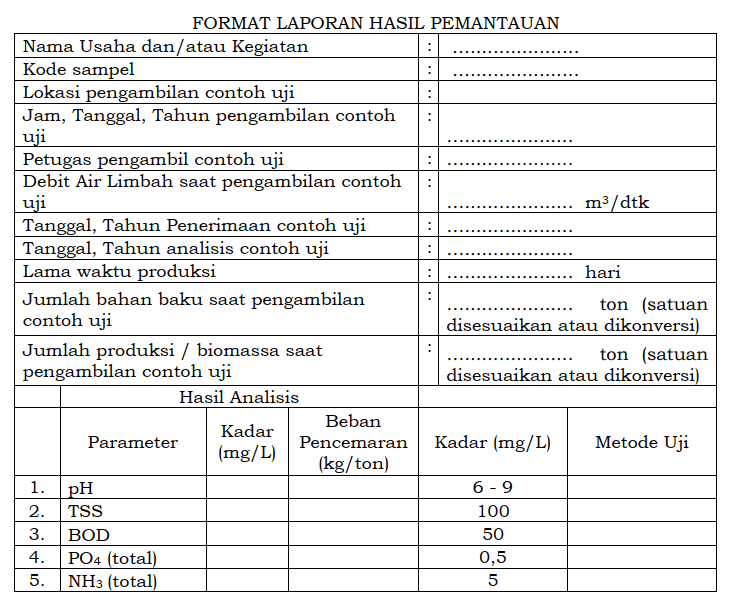 Image source: Regulation of the Minister of Environment/Head of the Environmental Management Agency Number 1 of 2025
Image source: Regulation of the Minister of Environment/Head of the Environmental Management Agency Number 1 of 2025
Wastewater Quality Standards for Shrimp Farms
Below are the parameters and maximum allowable concentrations of substances in shrimp farm wastewater as stipulated in the regulation.
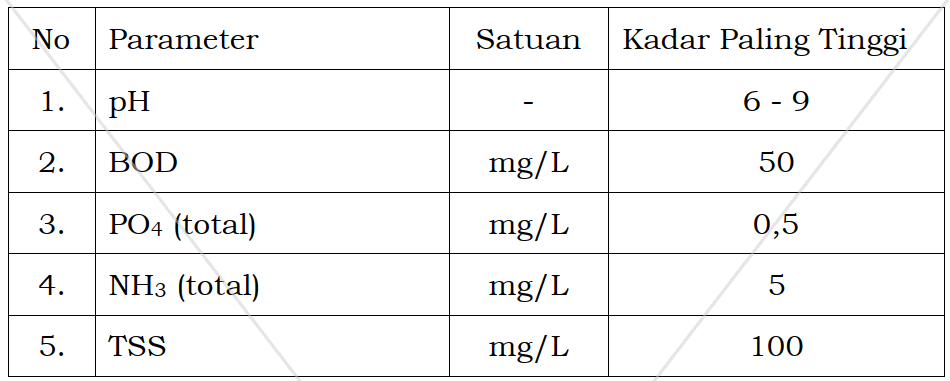 Image source: Regulation of the Minister of Environment/Head of the Environmental Management Agency Number 1 of 2025
Image source: Regulation of the Minister of Environment/Head of the Environmental Management Agency Number 1 of 2025
Wastewater Treatment Technology Standards
Shrimp farm wastewater treatment
To reduce the pollution load, shrimp farmers are encouraged to adopt standard technology for Wastewater Treatment Plant (WWTP). With this, effluent discharged into the environment can meet the regulated wastewater quality standards.
1. Characteristics of shrimp farm wastewater
According to Regulation of the Minister of Marine Affairs and Fisheries No. 75/PERMEN-KP/2016, shrimp farm wastewater is classified into two types:
- Maintenance wastewater: Originates from daily water exchange in grow-out ponds. Volume may vary depending on the farming method.
- Harvest wastewater: Comes from pond water draining during harvest.
2. Wastewater Treatment Plant (WWTP) facilities
The WWTP process for shrimp farming activities can be seen in the following diagram.
 Image source: Regulation of the Minister of Environment/Head of the Environmental Management Agency Number 1 of 2025
Image source: Regulation of the Minister of Environment/Head of the Environmental Management Agency Number 1 of 2025
3. Estimated wastewater discharge
- Maintenance wastewater discharge: Typically ranges from 5%–50% of pond water circulated daily, depending on shrimp age and farming methods. On average, 20% of pond volume is replaced daily.
- Harvest wastewater discharge: Generally around 16.7% of the pond water volume. The maintenance wastewater discharge must not exceed that of harvest wastewater.
Design criteria and dimensions for a simple WWTP unit
To optimize wastewater treatment in shrimp farms, WWTP system should be designed with appropriate structure and dimensions. The following is a sample layout for a simple WWTP unit that can serve as a reference for system development.
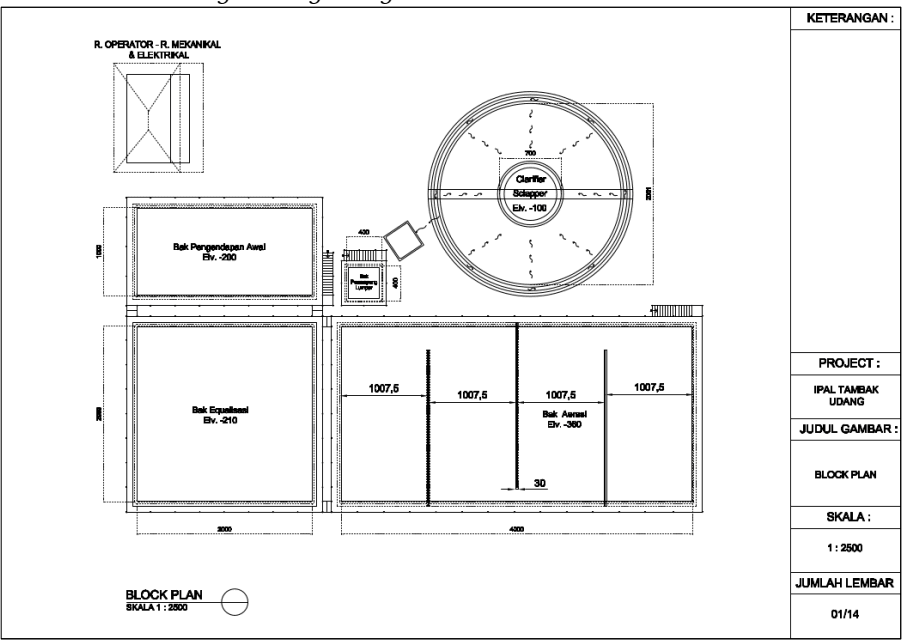 Image source: Regulation of the Minister of Environment/Head of the Environmental Management Agency Number 1 of 2025
Image source: Regulation of the Minister of Environment/Head of the Environmental Management Agency Number 1 of 2025
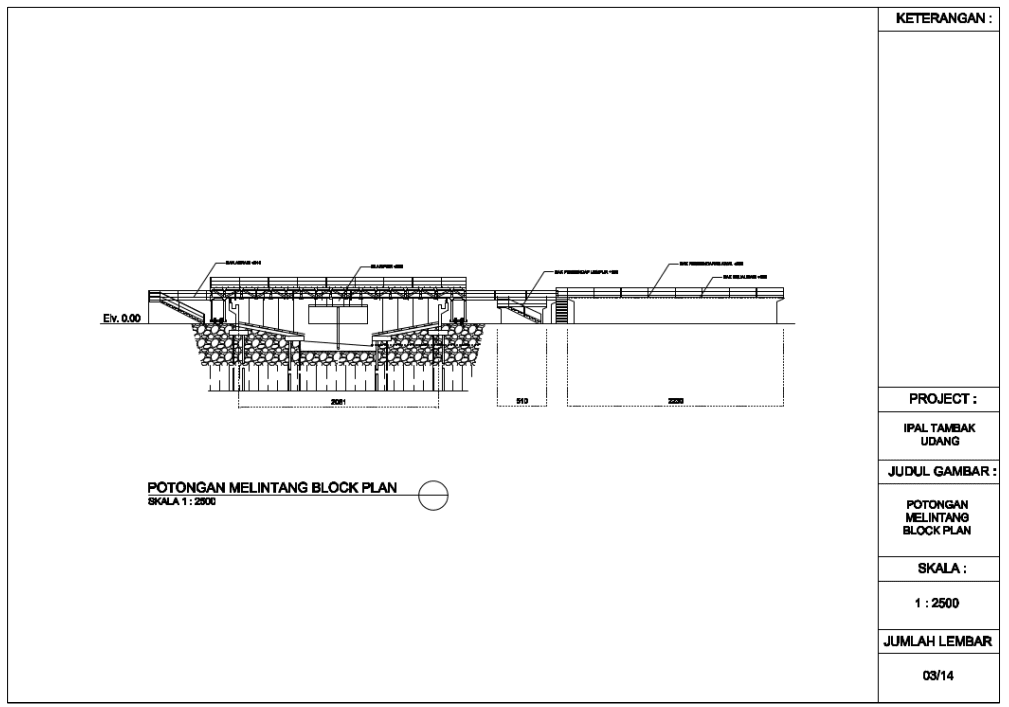 Image source: Regulation of the Minister of Environment/Head of the Environmental Management Agency Number 1 of 2025
Image source: Regulation of the Minister of Environment/Head of the Environmental Management Agency Number 1 of 2025
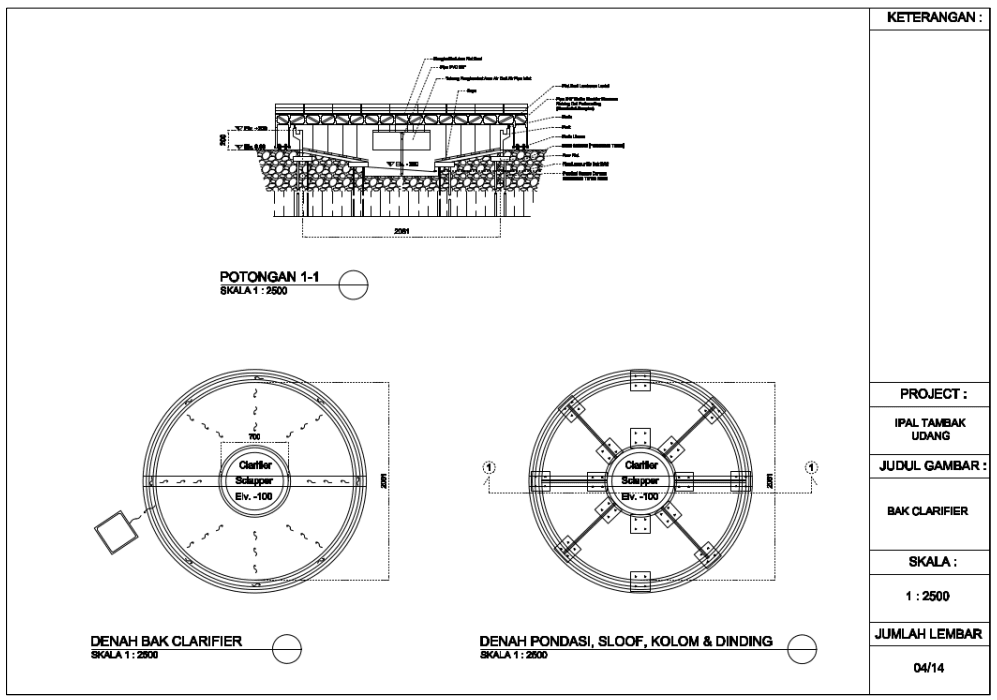 Image source: Regulation of the Minister of Environment/Head of the Environmental Management Agency Number 1 of 2025
Image source: Regulation of the Minister of Environment/Head of the Environmental Management Agency Number 1 of 2025
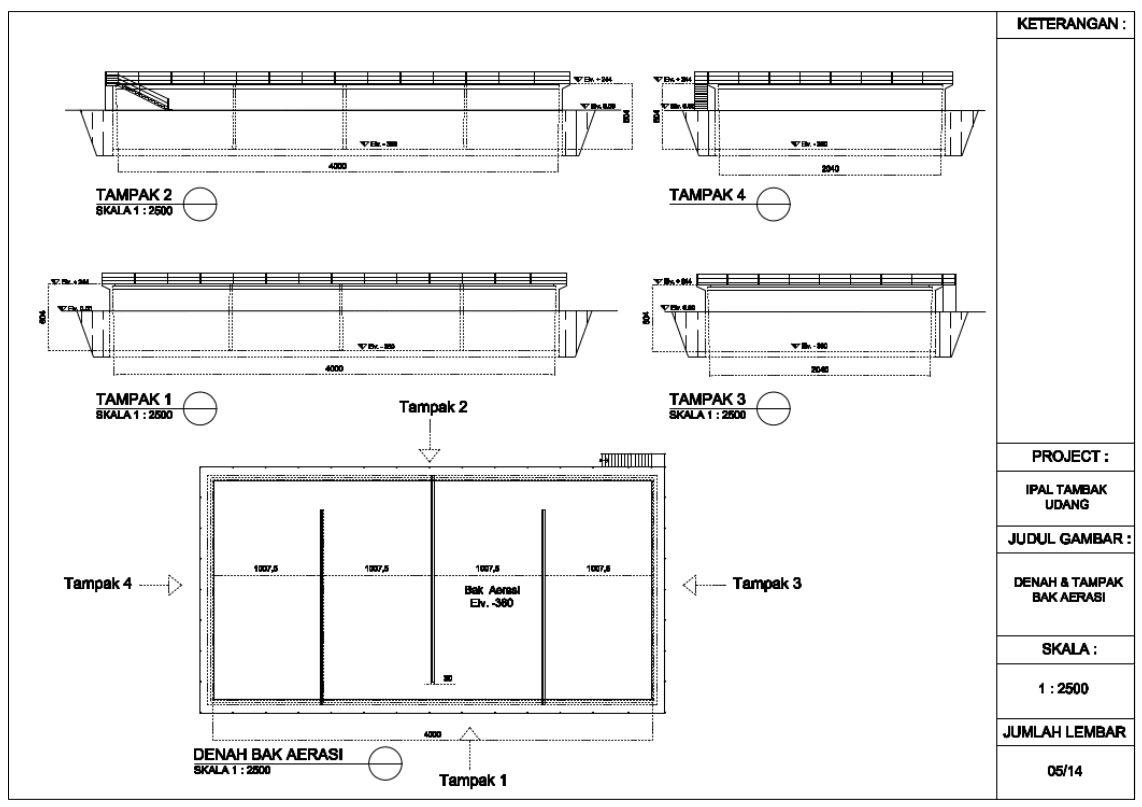 Image source: Regulation of the Minister of Environment/Head of the Environmental Management Agency Number 1 of 2025
Image source: Regulation of the Minister of Environment/Head of the Environmental Management Agency Number 1 of 2025
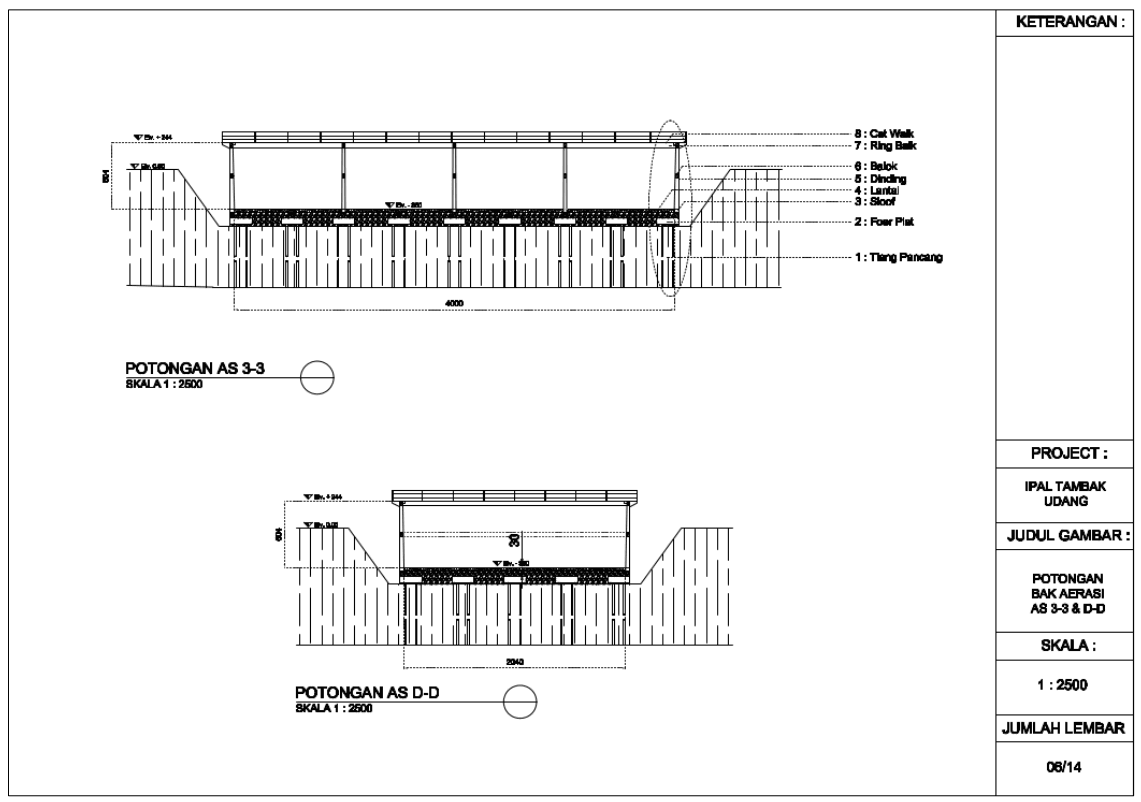 Image source: Regulation of the Minister of Environment/Head of the Environmental Management Agency Number 1 of 2025
Image source: Regulation of the Minister of Environment/Head of the Environmental Management Agency Number 1 of 2025
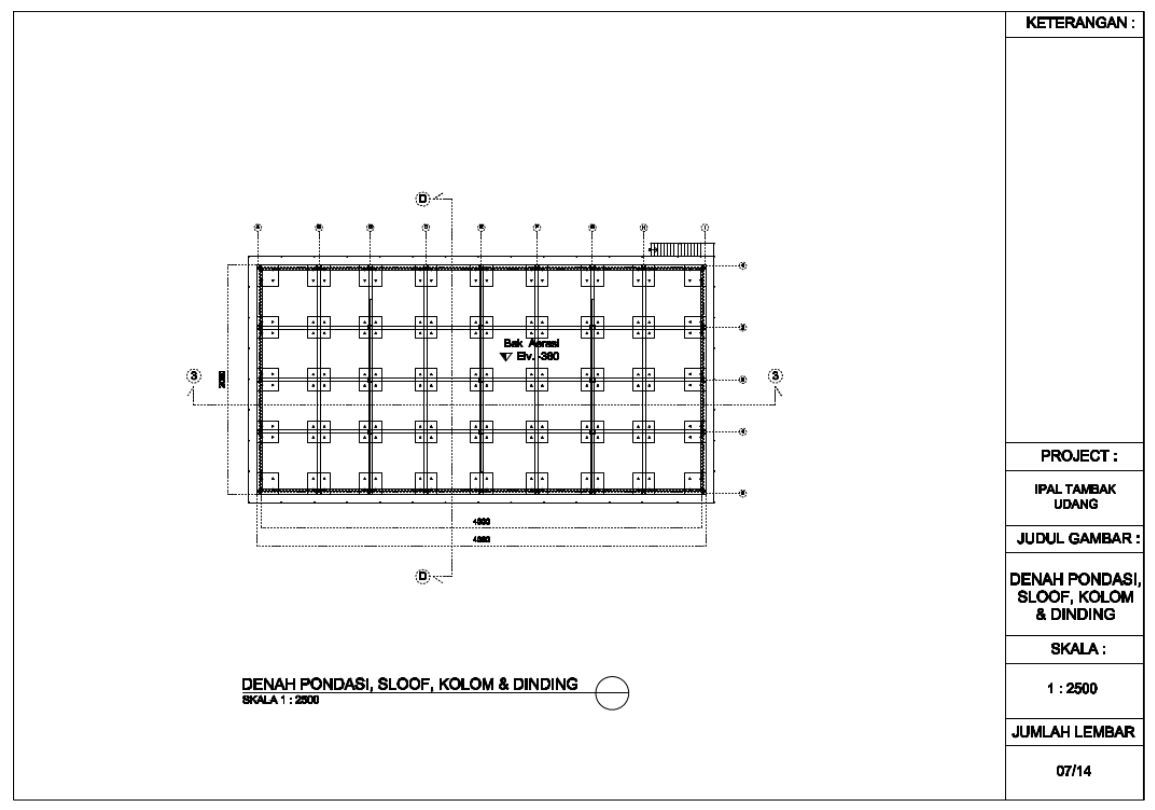 Image source: Regulation of the Minister of Environment/Head of the Environmental Management Agency Number 1 of 2025
Image source: Regulation of the Minister of Environment/Head of the Environmental Management Agency Number 1 of 2025
 Image source: Regulation of the Minister of Environment/Head of the Environmental Management Agency Number 1 of 2025
Image source: Regulation of the Minister of Environment/Head of the Environmental Management Agency Number 1 of 2025
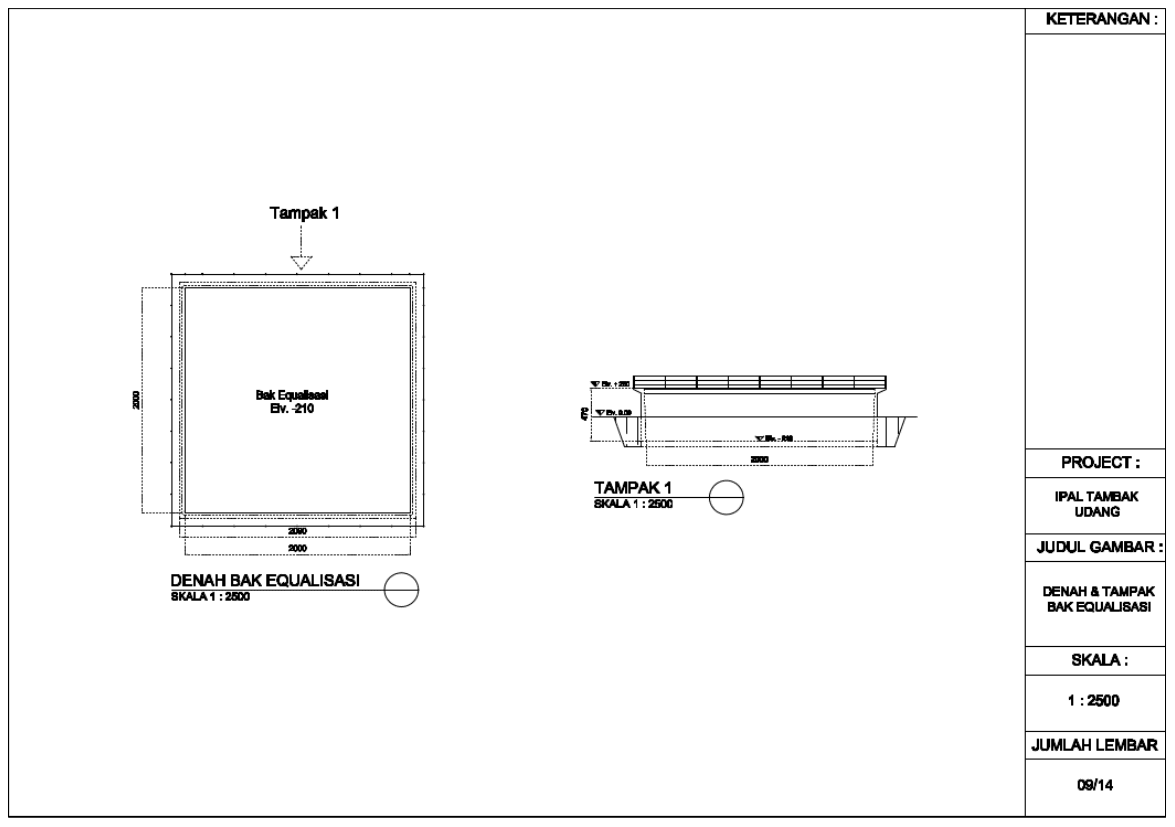 Image source: Regulation of the Minister of Environment/Head of the Environmental Management Agency Number 1 of 2025
Image source: Regulation of the Minister of Environment/Head of the Environmental Management Agency Number 1 of 2025
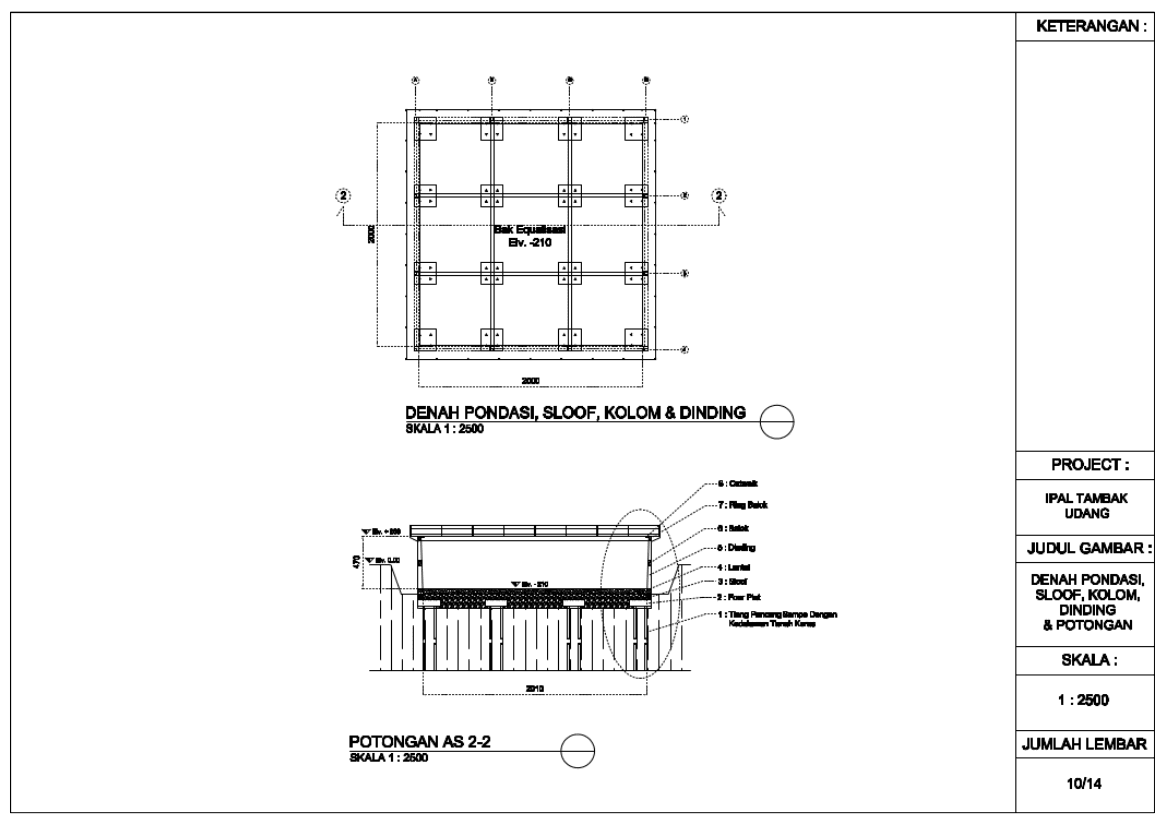 Image source: Regulation of the Minister of Environment/Head of the Environmental Management Agency Number 1 of 2025
Image source: Regulation of the Minister of Environment/Head of the Environmental Management Agency Number 1 of 2025
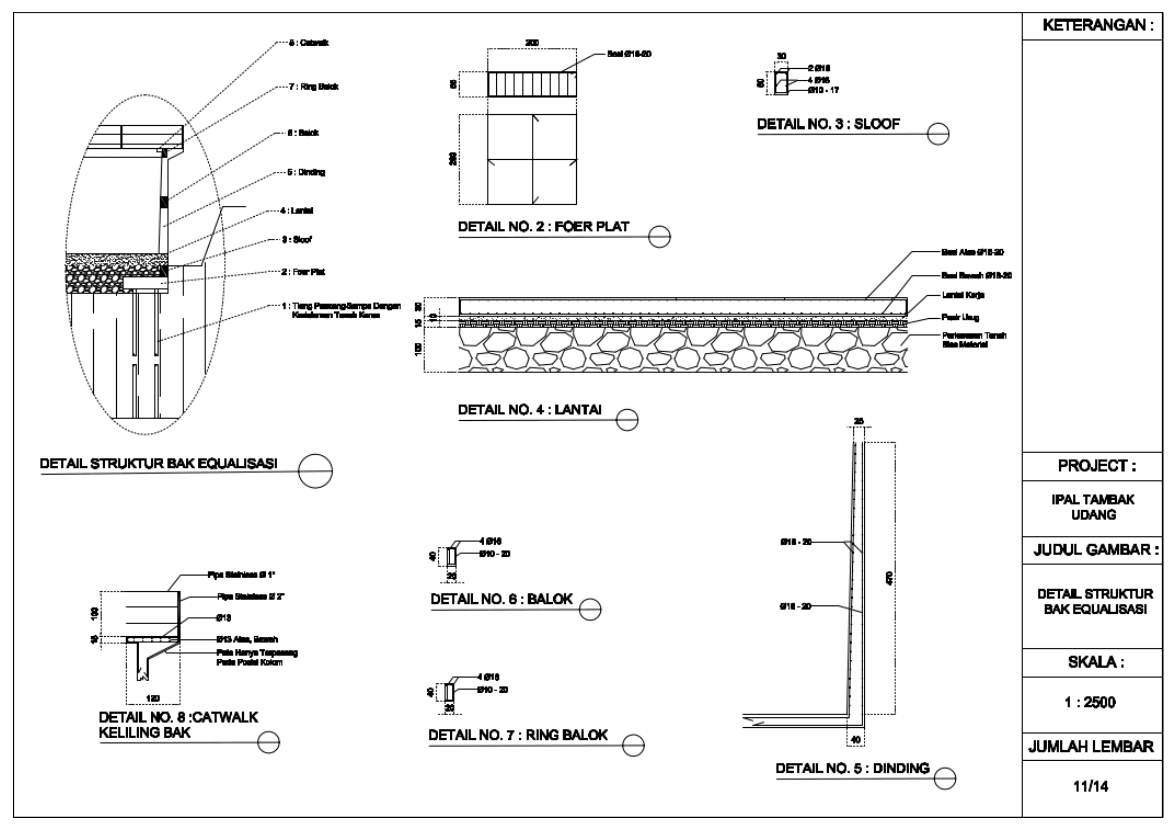 Image source: Regulation of the Minister of Environment/Head of the Environmental Management Agency Number 1 of 2025
Image source: Regulation of the Minister of Environment/Head of the Environmental Management Agency Number 1 of 2025
 Image source: Regulation of the Minister of Environment/Head of the Environmental Management Agency Number 1 of 2025
Image source: Regulation of the Minister of Environment/Head of the Environmental Management Agency Number 1 of 2025
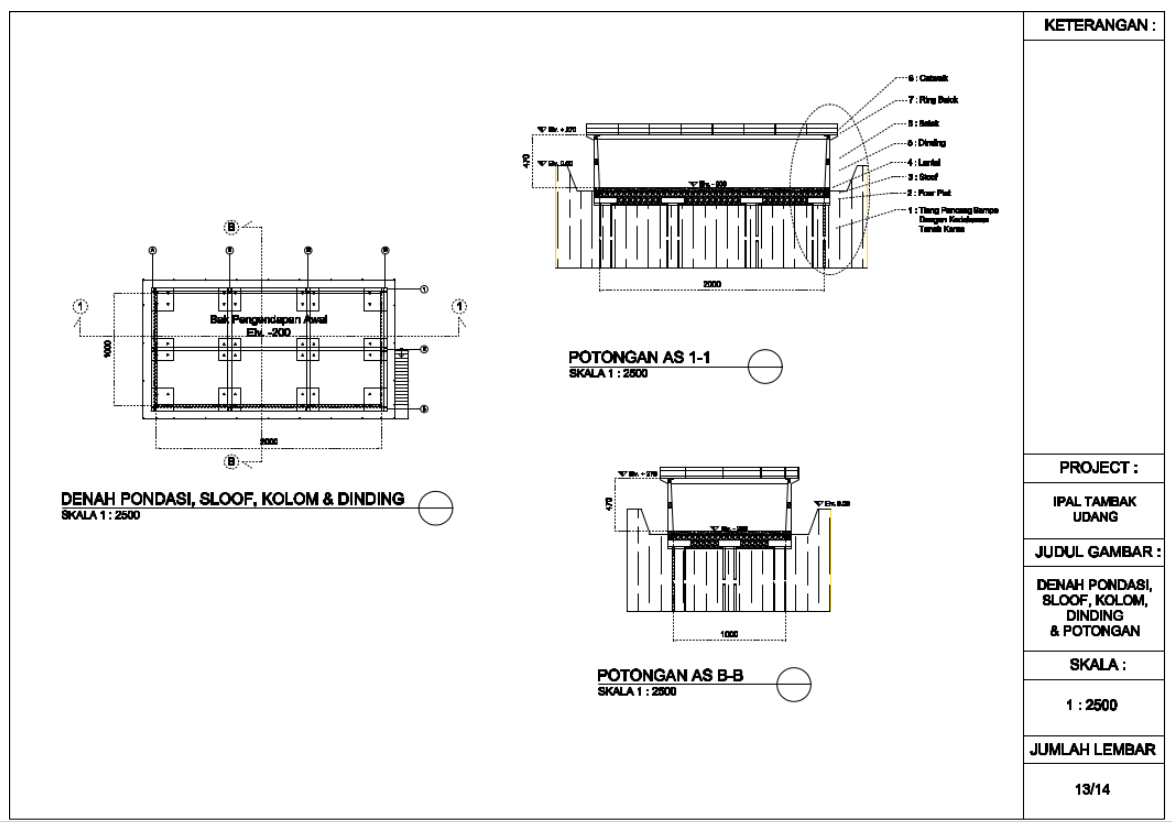 Image source: Regulation of the Minister of Environment/Head of the Environmental Management Agency Number 1 of 2025
Image source: Regulation of the Minister of Environment/Head of the Environmental Management Agency Number 1 of 2025
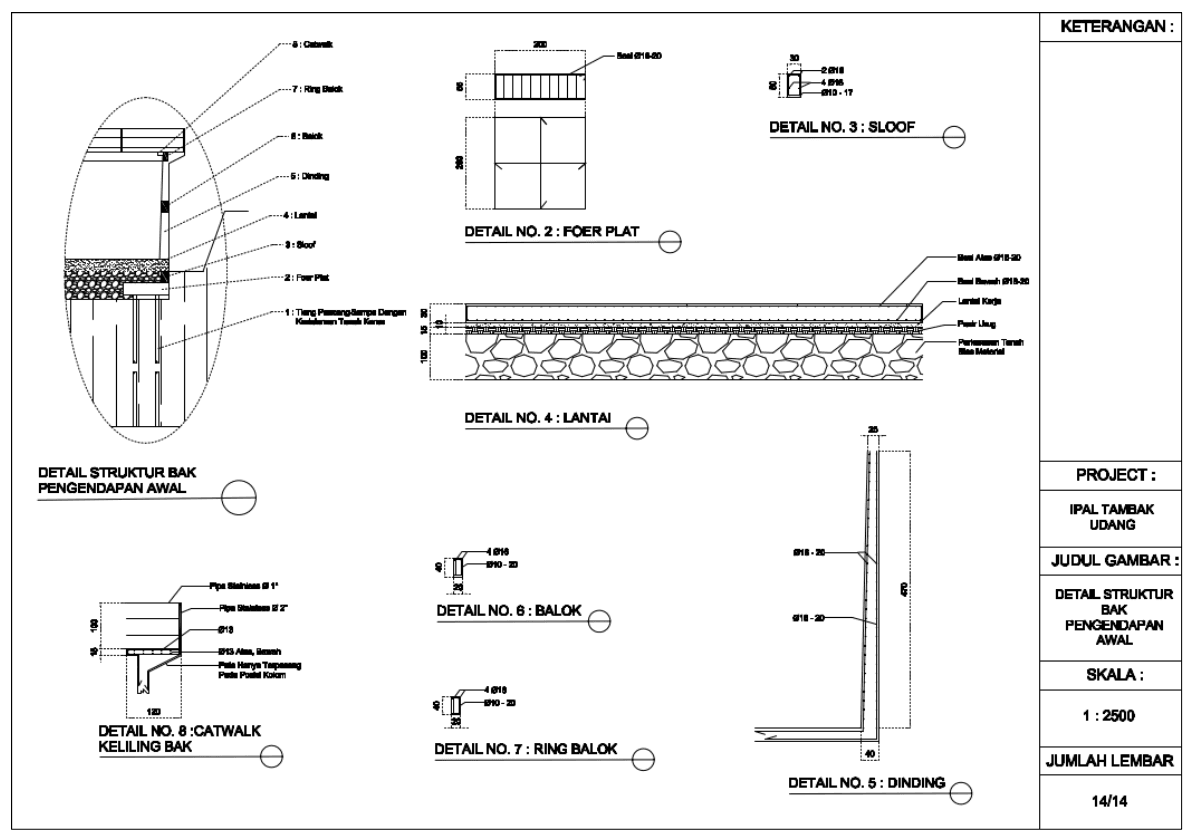 Image source: Regulation of the Minister of Environment/Head of the Environmental Management Agency Number 1 of 2025
Image source: Regulation of the Minister of Environment/Head of the Environmental Management Agency Number 1 of 2025
Legal Assistance for Shrimp Farming
Amidst regulations surrounding shrimp farm wastewater management, legality aspect is often overlooked by some farmers. However, ensuring legal compliance is key to running a legitimate, sustainable, and environmentally responsible farming operation.
To support this need, JALA provides legal advisory services through JALA Kusuma, offering dedicated assistance for aquaculture practitioners to understand and fulfill legal requirements in their businesses.
This service focuses on the aquaculture industry and includes support in the following areas:
- Business incorporation and licensing
- Environmental and sustainability permits
- Labor law and worker safety compliance
- Ongoing compliance monitoring and updates
For more information about JALA Kusuma, please contact: +62 813-2551-4194.

